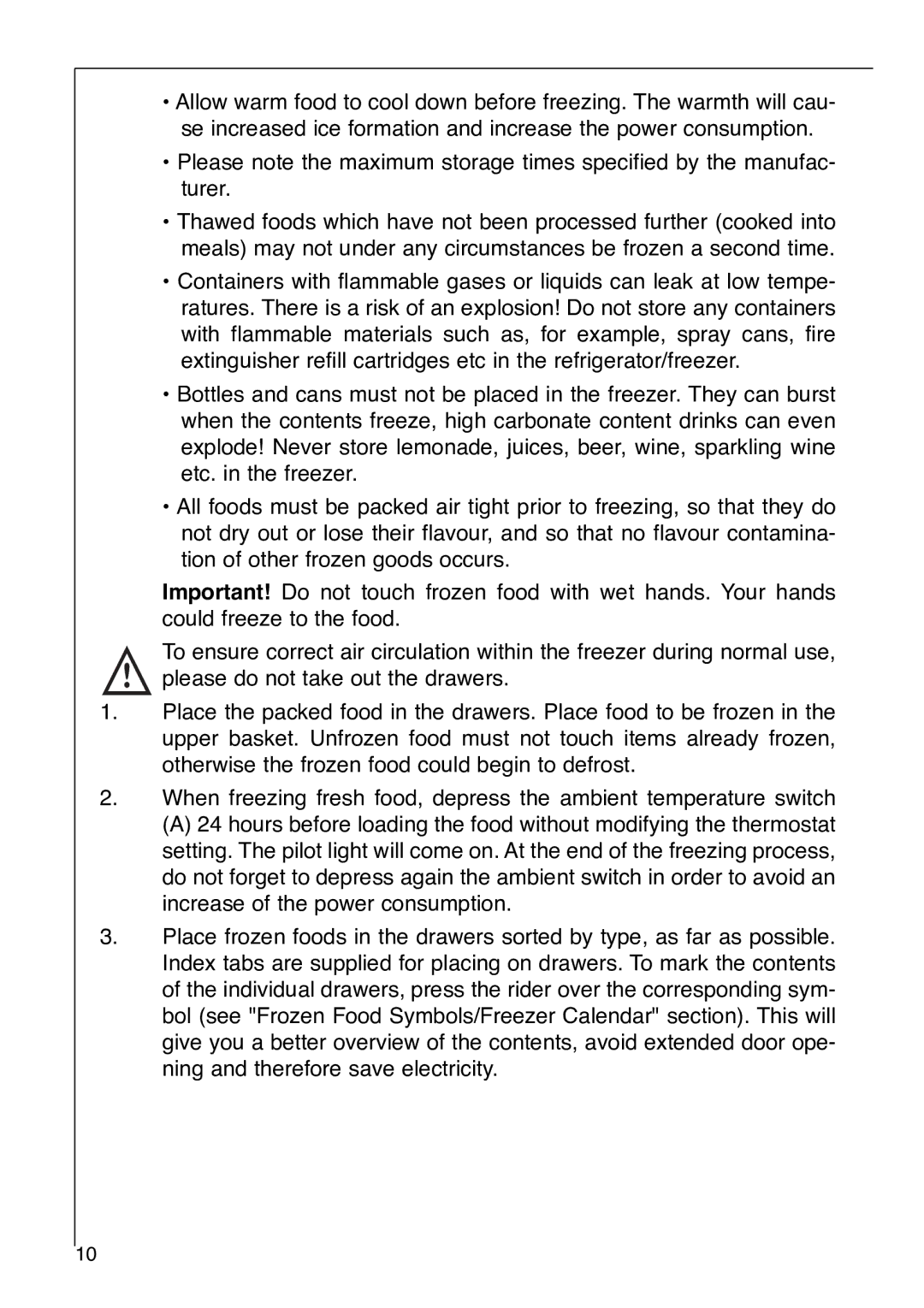Santo 2992-6 i specifications
The Electrolux Santo 2992-6 i is a refrigerator designed with modern homes in mind, marrying functionality with advanced technology. This appliance embodies efficiency, convenience, and aesthetic appeal, making it a popular choice for individuals and families looking for reliable refrigeration solutions.One of the standout features of the Santo 2992-6 i is its spacious interior, which maximizes storage potential. With a total net capacity of around 300 liters, it offers ample room for groceries, leftovers, and beverages. The adjustable shelves allow users to customize the space according to their needs, accommodating everything from tall bottles to delicate items.
Energy efficiency is a significant consideration in today’s eco-conscious market, and the Santo 2992-6 i excels in this regard. Rated with an impressive energy efficiency class, it helps reduce electricity consumption without compromising performance. This not only lowers utility bills but also supports environmental sustainability.
The refrigerator boasts innovative cooling technologies, including DynamicAir, which provides even temperature distribution throughout the appliance. This feature ensures that food stays fresh for longer periods, reducing spoilage and waste. The Humidity Control system is another key element, maintaining optimal humidity levels in the fridge compartment that is ideal for preserving fruits and vegetables.
The design of the Santo 2992-6 i is both sleek and user-friendly. The appliance features a contemporary aesthetic that fits seamlessly with various kitchen styles. The external controls are intuitive, providing easy access to settings and functions without the need to open the door.
Another notable characteristic is the No Frost technology that prevents the buildup of frost and ice, eliminating the need for manual defrosting. This maintenance-free approach enhances convenience for users, making the Santo 2992-6 i a practical choice for busy households.
In summary, the Electrolux Santo 2992-6 i refrigerator synthesizes advanced technology and smart design with features that prioritize freshness, efficiency, and ease of use. With its ample storage, energy-saving capabilities, and innovative cooling systems, it stands out as a reliable appliance that meets the modern demands of any kitchen. Whether you are a culinary enthusiast or simply need a dependable way to store your groceries, the Santo 2992-6 i is designed to exceed expectations.

